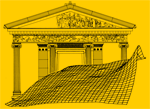|
QUOTATIONS
G.L. Cowgill, Getting Bayesian ideas across to a wide audience, «Archeologia e Calcolatori» 13, 2002, 191-192.
Beginning about 1962, for some years I taught introductory statistics courses in which I dealt with inference using the Neyman-Pearson
approach, as best I understood it. This always seemed to me a rather austere and un¬natural intellectual self-discipline, standing in much
the same relationship to everyday reasoning as learning the moves and postures of classical ballet re¬lates to just walking.
Nevertheless, it seemed that this was the only way to do it, if one were to use statistical inference competently and correctly.
It was probably always the most difficult and challenging part of the course for both me and students - far harder than teaching them
how to plug numbers into formulas and compute a correlation coefficient or a chi-square statistic or the like - and a high proportion of
students never really got it.
I no longer recall when I first became aware of the Bayesian approach to inference, but I think that from the beginning it was like a great light
dawning (like one of those light bulbs in the cartoons), and I was rather embarrassed that I had accepted the Neyman-Pearson doctrine as long as
I had. So, as I say, it was unclear to me why everyone else exposed to Bayesian concepts should not become an instant convert.
In the case of sophisticated statisticians, this is still unclear to me. For the relatively unsophisticated - and this includes all but a tiny
handful of archaeologists - suspect that a main source of resistance is that they never really understood the logic of Neyman-Pearson inference
very well, but it provided the rituals they were taught to believe were founded on unchallengeable truths emanating from higher authorities
(i.e., professional statisticians who really understood all those arcane symbols) and which could thus legitimize their conclusions.
|



